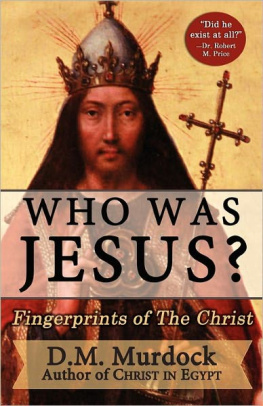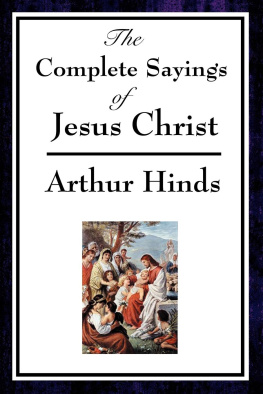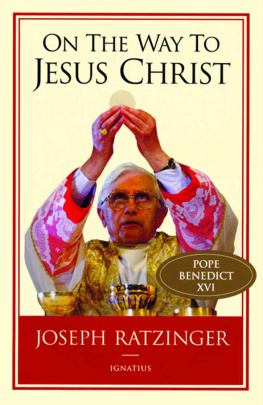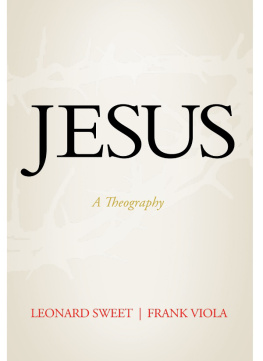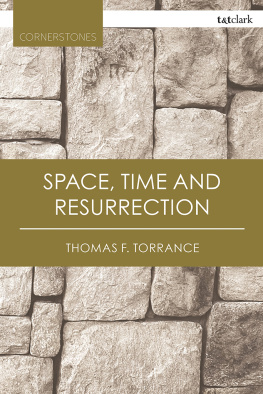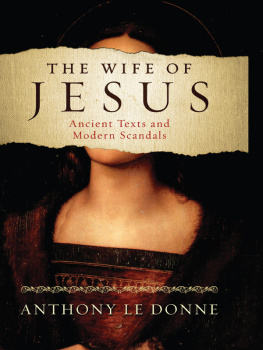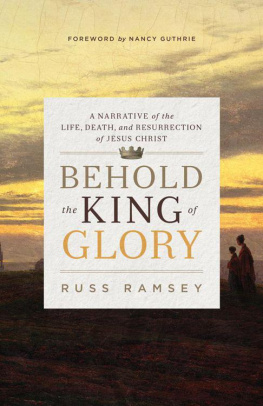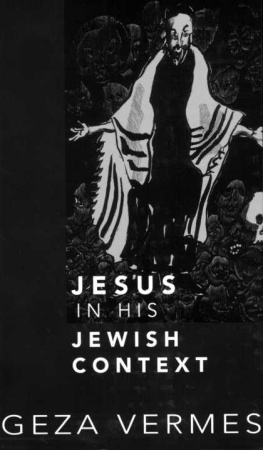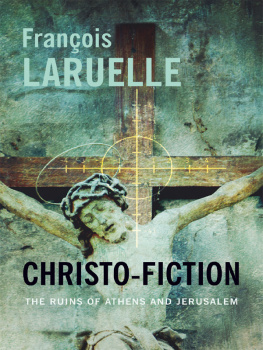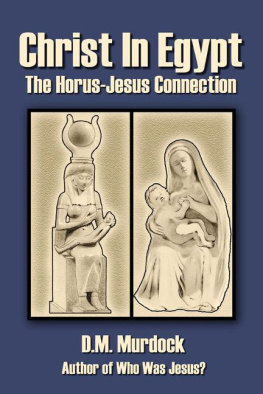D M Murdock - Who was Jesus : fingerprints of the Christ
Here you can read online D M Murdock - Who was Jesus : fingerprints of the Christ full text of the book (entire story) in english for free. Download pdf and epub, get meaning, cover and reviews about this ebook. City: Seattle, WA, year: 2007, publisher: Stellar House Pub, genre: Religion. Description of the work, (preface) as well as reviews are available. Best literature library LitArk.com created for fans of good reading and offers a wide selection of genres:
Romance novel
Science fiction
Adventure
Detective
Science
History
Home and family
Prose
Art
Politics
Computer
Non-fiction
Religion
Business
Children
Humor
Choose a favorite category and find really read worthwhile books. Enjoy immersion in the world of imagination, feel the emotions of the characters or learn something new for yourself, make an fascinating discovery.
- Book:Who was Jesus : fingerprints of the Christ
- Author:
- Publisher:Stellar House Pub
- Genre:
- Year:2007
- City:Seattle, WA
- Rating:4 / 5
- Favourites:Add to favourites
- Your mark:
- 80
- 1
- 2
- 3
- 4
- 5
Who was Jesus : fingerprints of the Christ: summary, description and annotation
We offer to read an annotation, description, summary or preface (depends on what the author of the book "Who was Jesus : fingerprints of the Christ" wrote himself). If you haven't found the necessary information about the book — write in the comments, we will try to find it.
Who was Jesus : fingerprints of the Christ — read online for free the complete book (whole text) full work
Below is the text of the book, divided by pages. System saving the place of the last page read, allows you to conveniently read the book "Who was Jesus : fingerprints of the Christ" online for free, without having to search again every time where you left off. Put a bookmark, and you can go to the page where you finished reading at any time.
Font size:
Interval:
Bookmark:
THE CHRIST

Suns of God: Krishna, Buddha and Christ Unveiled
Christ in Egypt: The Horus-Jesus Connection
The Gospel According to Acharya S
The Astrotheology Calendar Series
WHO WAS JESUS? FINGERPRINTS OF THE CHRIST
Copyright 2007, 2011 by D.M. Murdock a.k.a. Acharya S
All rights reserved. Printed in the United States of America.
No part of this book may be used or reproduced in any manner whatsoeverelectronic, mechanical, photocopy, recording, or otherwisewithout written permission except for brief quotations in articles and reviews. For information, address Stellar House Publishing, LLC, 93 S. Jackson St., Ste. 57463, Seattle, WA 98104; www.stellarhousepublishing.com
Murdock, D.M./Acharya S
Who was Jesus? Fingerprints of the Christ.
1. Jesus ChristHistoricity 2. ChristianityOrigin
Includes bibliographical references and index
ISBN: 0-9799631-0-9
ISBN13: 978-0-9799631-0-0
The Gospel According to
Matthew 3
The Gospel According to Mark 22
The Gospel According to John 36
Textual Harmonization 44
Jesus Outside of the Bible 74
Gospel Story 120

only 90 miles long.
D .M. Murdock , familiarly known to admirers and friends as Acharya, the Teacher, depends as much upon conservative writers, both Catholic and Protestant, this time around as she did on radical scholars in her first book, The Christ Conspiracy . I do not mean to suggest an unduly polemical goal or tone (indeed, she is everywhere moderate and restrained), but the effect is to take the fight right into the opposite camp. It can be a friendly debate, and it is good sport. Without rancor, differences of opinion are quite instructive. This time, she scrutinizes what might at first seem unexceptionable observations by evangelical scholars and apologists (usually the same thing) and Catholic scholars and encyclopedists, and then goes on to show how even their reassurances to the flock contain the seeds of serious doubt that Jesus was divineor even human! Did he exist at all?
Ms. Murdock spends some time on textual criticism, Lower Criticism, which has long served as a safe subdiscipline for sophisticated but conservative Christian scholars. Though textual criticism takes its starting point from the element of doubt, many or even most evangelicals see the need for it. Some of the first text critics were Plymouth Brethren and conservative Anglicans, and their concern was a natural extension of their doctrine of the verbal inspiration of the Bible. If the very words of the text were inspired, then, isnt it logical to get as close as we can to the authentic text? It may be tedious, but it is a holy task. How interesting, as Murdocks quotations suggest, that while wearing the cap of the text critic, an evangelical scholar stresses the complexity of the issue, the huge number of textual variants, i.e., errors of transmission; but when donning the hat of the apologist, the evangelical minimizes their importance! Oh, dont worry: most of the errors are unimportant bits of grammatical inaccuracy or of a wandering eye, the scribe writing what he expected to be next on the page, not what was actually there. So the Lower Critic wants to keep himself in business, but as an apologist, and lest Lower Criticism open the forbidden door to the Higher Criticism (questions of author-attribution, historical accuracy, etc.), he maintains that his labors were basically for nothing, since the New Testament is close enough to a perfect original. No important theological point hinges on a textual decision. Oh no? How about the all-important Trinity doctrine? If only 1 John 5:8b (For there are three that bear witness in heaven: the Father, the Word, and the Holy Spirit, and these three are one.) had not been revealed as a cheat smuggled into the text by a pal of Erasmus, theologians would have firm proof of the Trinity.
Perhaps even worse is the fundamentalist retreat to the original autographs (the biblical writings as they came fresh from the pens of their authors). It is a true pharmakon such as the French philosopher Jacques Derrida discussed: a ventured remedy that turns out instead to be a poison. Benjamin B. Warfield, one of the chief architects of the modern notion of biblical inerrancy, demanded that, before one pronounced the Bible to be in error at any point, one must demonstrate that the original autographs contained the same text we are reading at that point. And that, as Warfield knew well, is impossible, the autographs having long since perished. How did Warfield (and his legions of followers) not see the terrible implication? Could we not propose that the Bible is as full of errors as Tom Paine and Colonel Ingersoll said it was, but then posit that once upon a time there existed a miraculous error-free Bible? Sure we could, and it would do us no good at all. That is a case of destroying the village in order to save it.
Ms. Murdock makes much of the neglected issue of a scripture the composition of which was ostensibly inspired, but whose preservation was apparently left to the shifting winds of fortune. If one were to claim only that the Bible had been infallibly inspired, we could not readily verify or falsify the claim, because the believer could always retreat to the autographs, or, failing that, he might appeal to an imaginary vindication in some Bible Contradictions Seminar to be offered one day in heaven. But if one were to claim the scripture has been infallibly preserved through the many centuries of copying, well, we can falsify that claim, and its been done. So why believe in infallible inspiration either? Actually, there are scriptural preservationists, but they are no better off in practical terms, since all they can claim is that God has seen to it that the true reading of every line has survived somewhere in vast manuscript tradition, like a needle in a haystack. And it is the textual critics job to find it. And once youve honed the claim for providential preservation of inerrant scripture in this peculiar manner, where do you differ from mainstream text critics? They, too, hope the true text is back there somewhere. Neither side claims to have it.
Are the four gospels a quartet of independent witnesses? Murdock shows what first appears to be, again, non-controversial: that even Catholics and evangelicals are by and large disposed to accept source criticism, that Matthew and Luke used Mark, etc. But they do not seem to realize, as Murdock does, that this admission is doubly fatal. First, it means that at least some of the gospels are not based on eyewitness testimony. Luke and Mark never claim to be. Matthew and John share names with two characters who appear in the gospel story, but that does not even hint that they are supposed to be the disciples Matthew and John. If Matthew the evangelist were Matthew the eyewitness disciple, how is it possible he would base his gospel on the account of Mark, who was not? But if sophisticated evangelicals understand and accept basic source criticism, why do they continue to harmonize the gospels with the rationalization that different witnesses to the same event may include, exclude, or stress different elements, resulting in accounts that differ but are all accurate as far as they go? That analogy is simply impossible once you realize that source criticism entails redaction criticism: If author A uses source B yet differs at some point from B, then A has modified B. They are not independent.
Font size:
Interval:
Bookmark:
Similar books «Who was Jesus : fingerprints of the Christ»
Look at similar books to Who was Jesus : fingerprints of the Christ. We have selected literature similar in name and meaning in the hope of providing readers with more options to find new, interesting, not yet read works.
Discussion, reviews of the book Who was Jesus : fingerprints of the Christ and just readers' own opinions. Leave your comments, write what you think about the work, its meaning or the main characters. Specify what exactly you liked and what you didn't like, and why you think so.

